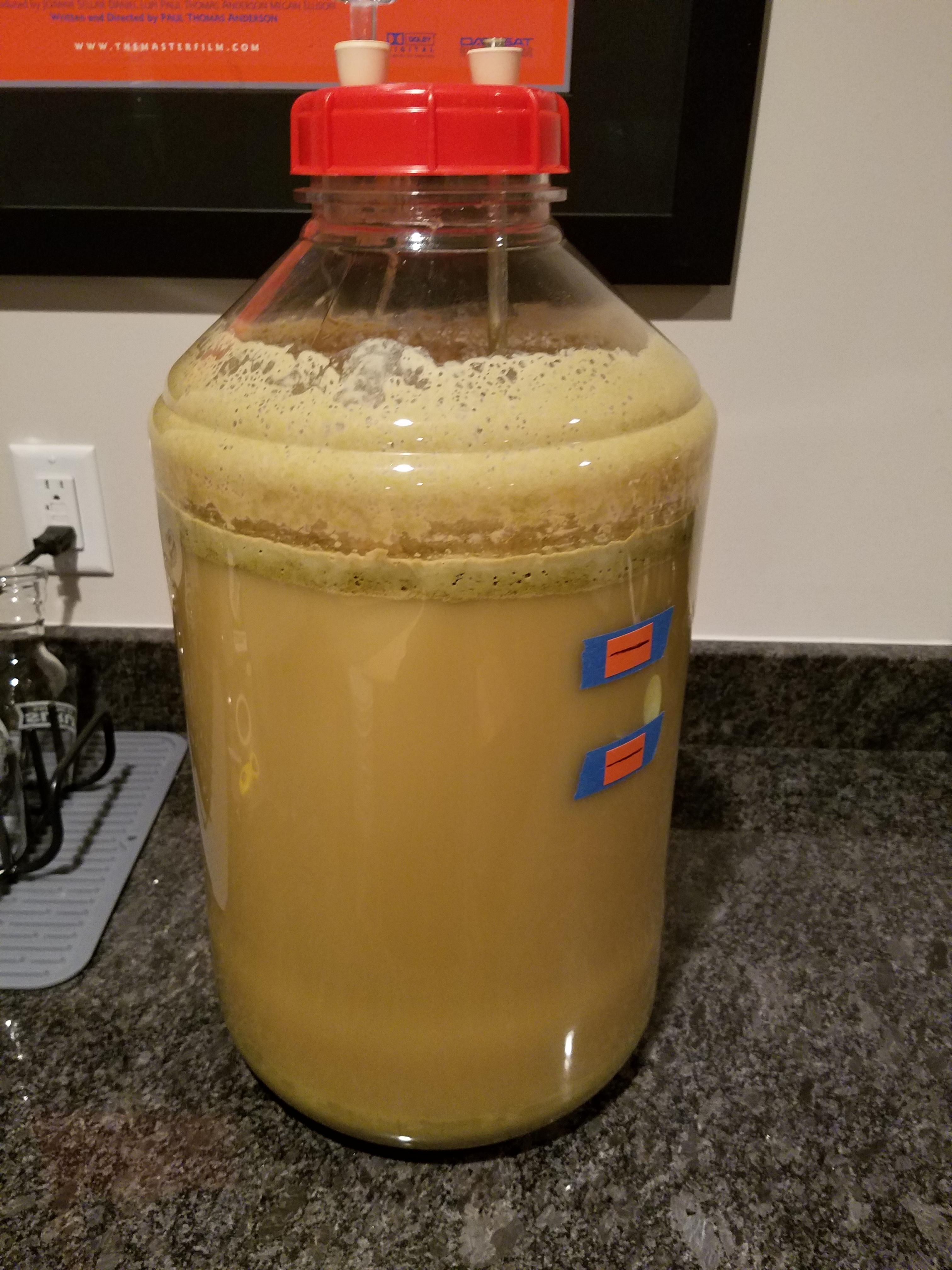BrewinSoldier
Well-Known Member
- Joined
- Jul 13, 2015
- Messages
- 481
- Reaction score
- 53
Second batch based on this recipe is tasting great. Needed a little time to get past the bite/tingle from the heavy dry hop (you could see fine hop particles in the first several glasses, even after transferring through a 300 micron filter on the dip tube of the dry hop keg).
Brewed 1/7 and kegged 1/21. Columbus for bittering, the remaining four additions were 1.5 oz Citra and 1.5 oz Mosaic. OG of 1.070 and FG of 1.012, for ~7.8%.

That looks great. How'd you get it so orange looking? I'm guessing you used Marris otter as your base malt. That seems to be what gives it a more orangish hue.
I used the recipe in the original posting and have a batch in the fermenter as we speak. SG was dead on at 1.062, but with 1318 and only a 1 liter starter at 3 days on a stirplate, my gravity right now is already 1.008 and it's still blowing bubbles pretty good. It's only been in the fermenter since Friday night at around 9pm, so not even 3 days. My mash pH was higher than calculated on Bru n water. I had it calculated at 5.39 and it ended up at 5.56. I'm gonna add the first dry hops tonight so we will see if that changes the color any. It tasted pretty good already from the sample I just tasted so I'm happy with that.































![Craft A Brew - Safale S-04 Dry Yeast - Fermentis - English Ale Dry Yeast - For English and American Ales and Hard Apple Ciders - Ingredients for Home Brewing - Beer Making Supplies - [1 Pack]](https://m.media-amazon.com/images/I/41fVGNh6JfL._SL500_.jpg)



























